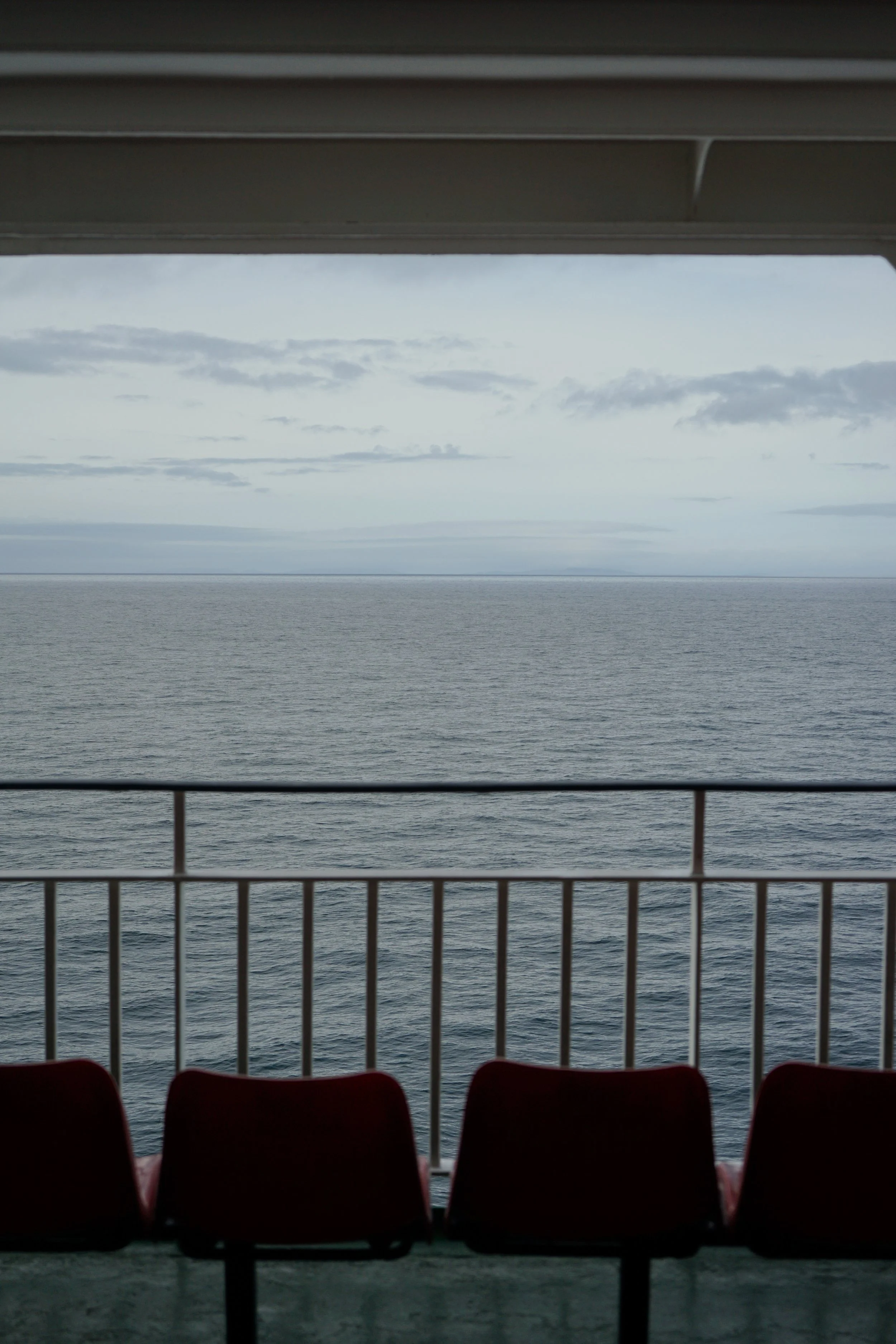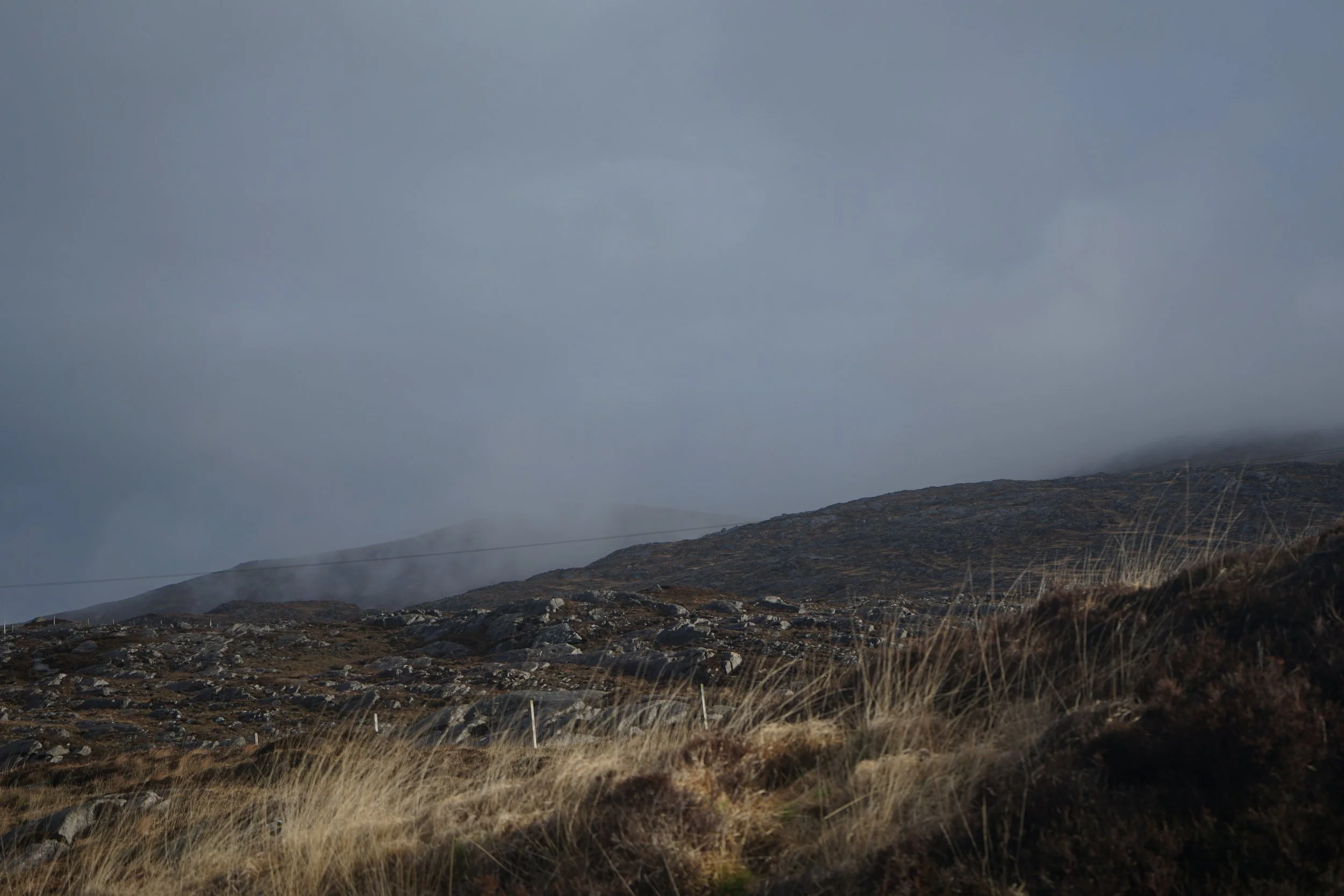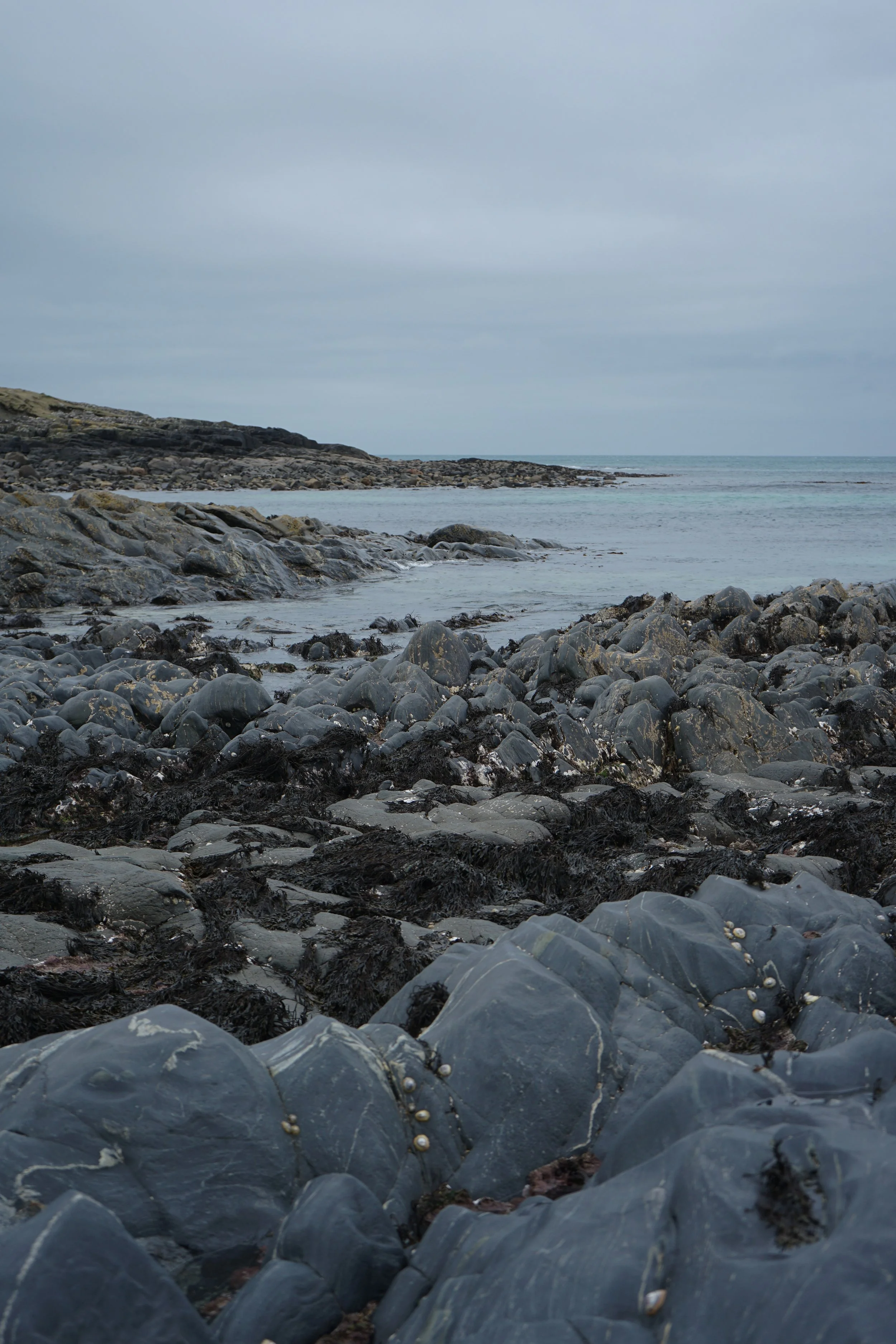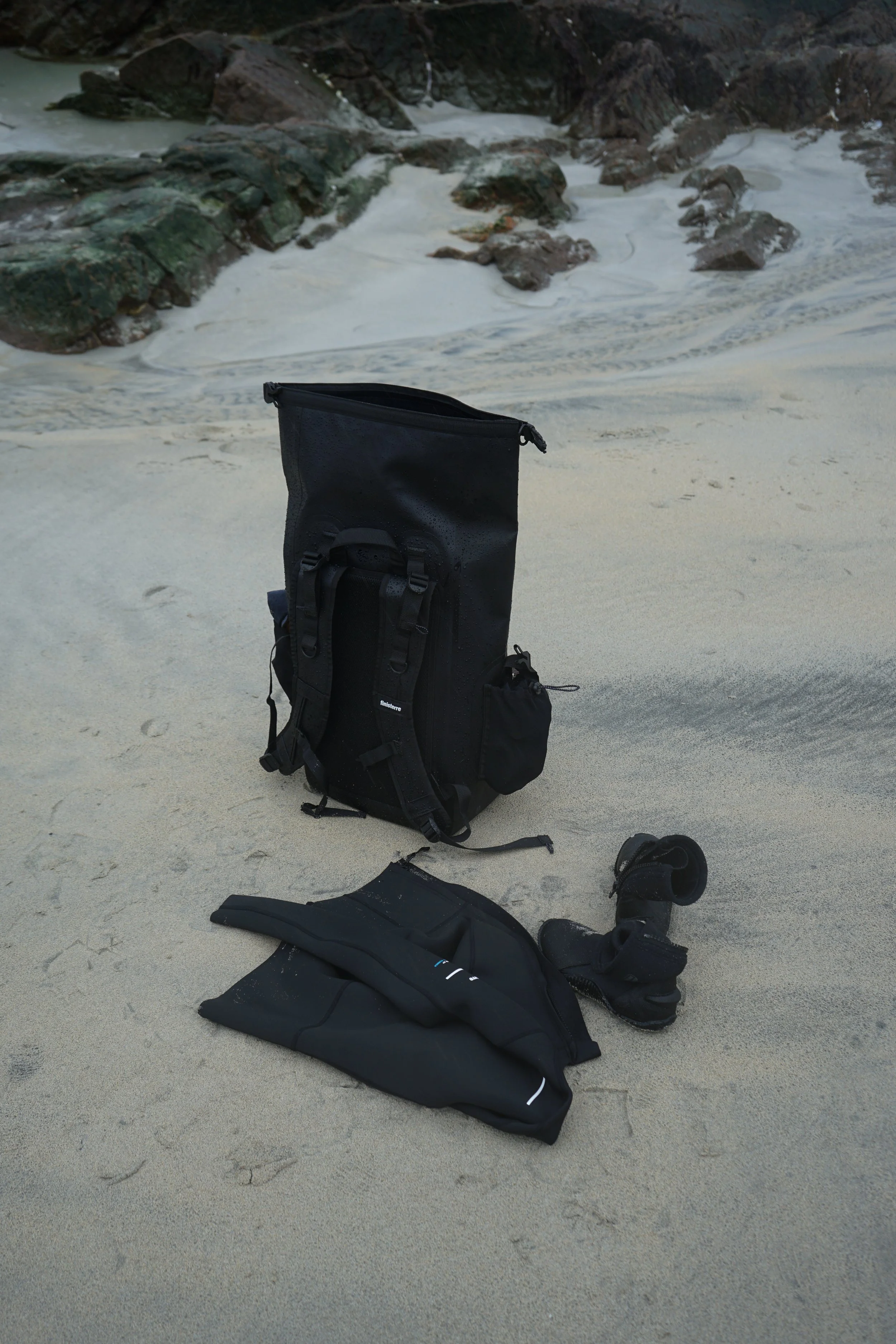72 HOURS ON THE ISLE OF HARRIS
The rows of little red plastic seats gazing out to sea spark an unexpected wave of childhood nostalgia. The last time I was on a Caledonian-Macbrayne ferry, I was 6 or 7, on a family day trip to the Isle of Mull. I don’t remember much, only a wide sand beach strewn with pebbles, and spending the whole crossing gazing through white-painted railings at the water, half-afraid that I would slip through the gaps into the depths below.
Almost 20 years later, the red plastic is still the same. Still gazing down into the water as it rises and falls, churning against the side of the ferry as we leave the tiny port of Uig behind. It’s April, and back home, buds are starting to flower and green is returning to the landscape — up here, the seasons are slower, a sharp chill still hanging in the air, the wind still biting as it rushes across the surface of the water, whistling through the whitewashed railings. Despite the cold, the outer deck is lined with passengers, wrapped in dark jackets, bracing against the wind, scanning the horizon for a glimpse of the whales or dolphins promised by the posters peeling from the walls of the corridor inside. Lick your lips, they’re salty.
For the first time in a long time, I’d been nervous about travelling alone. About driving the van along tiny single-track roads that I didn’t know, about getting a flat tyre, finding a place to camp, driving onto the ferry. Things that had never crossed my mind before, even though they were all the monotonous kinds of occurrences that can happen at any time. And yet, I managed not to drive into the sea when boarding, and kept all of my tyres. And driving up out of Tarbert, the sun finally dripped through the clouds, streaming across a landscape unlike any other I’d seen before. It’s the kind of place that just makes you want to look, and look harder, trying to memorise every minute detail of the hills that rise and fall, as if like waves, carpeted in grasses, swaying, golden in the morning light.
First stop: Temple Harris, a cosy little cafe and bakery nestled inside a unique, stone building in Northton — the only place I’d really marked as “want to visit”. The rest, as always, would be left to chance — following the single-track roads and seeing where they lead. Without a plan for the next three days, but with an armful of fresh bread, marmalade and sugar kelp salt, I wandered back up the road to the van, willing the squall that was gathering on the horizon to keep its distance. That’s the thing about travelling alone, tip-toeing the thin line between freedom and loneliness. The silence can be deafening at times — at others, it’s drowned out by crashing waves, or rain lashing the windscreen. Or me attempting my best Bon Iver impression, whiling away the endless miles of the M6 north.
And then, Luskentyre. If you’re ever trying to convince someone that cold beaches can be good, too, this is the place to show them. There’s a reason why it is one of the most popular spots on Harris; a swathe of white sand disappearing into water so blue that it could be tropical, if you squint hard enough. It’s the kind of place that makes you want to look harder, to memorise every detail, absorb the salt in the air and the sun shimmering between grasses on the rocky shore, turning them from green to gold, still dancing with the wind. Each day, I returned here, and each day, it was different. On the first, the mountains rose in the distance, deep blue and swathed in grey cloud. On the second they were gone, swallowed by a rain that fell first as mist and then in sheets, gathering in tiny pools in the creases of the backpack I left on the beach as I ran in and out of the water, determined to swim at least once. And on the third, sunlight poured over the sand like liquid gold, flowing between strands of dry bladderwrack that littered the strandline. One last time, only for a moment, before boarding the morning ferry for the first leg of the journey home.







